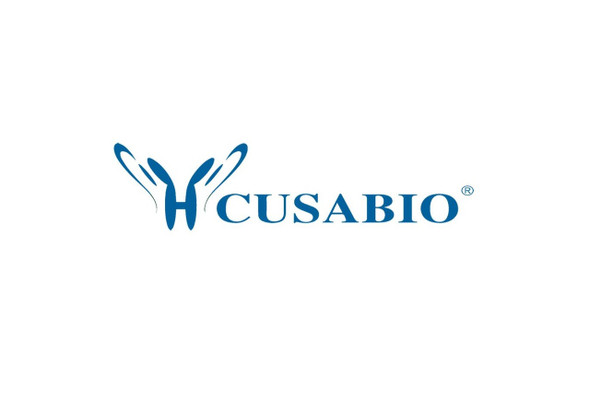Cusabio Virus & Bacteria Recombinants
Recombinant Candida glabrata Autophagy-related protein 8 (ATG8) | CSB-EP739788CZIa2
- SKU:
- CSB-EP739788CZIa2
- Availability:
- 13 - 23 Working Days
Description
Recombinant Candida glabrata Autophagy-related protein 8 (ATG8) | CSB-EP739788CZIa2 | Cusabio
Alternative Name(s): Autophagy-related ubiquitin-like modifier ATG8
Gene Names: ATG8
Research Areas: Others
Organism: Candida glabrata (strain ATCC 2001 / CBS 138 / JCM 3761 / NBRC 0622 / NRRL Y-65) (Yeast) (Torulopsis glabrata)
AA Sequence: MKSSFKSEYPFEKRKAESERISEKFQNRIPVICEKAEKSDIPEVDKRKYLVPADLTVGQFVYVIRKRIMLPPEKAIFIFVNDTLPPTASLMSQVYQEHKDKDGFLYVTYSGENTFG
Source: E.coli
Tag Info: N-terminal 6xHis-SUMO-tagged
Expression Region: 1-116aa
Sequence Info: Full Length
MW: 29.5 kDa
Purity: Greater than 90% as determined by SDS-PAGE.
Relevance: Ubiquitin-like modifier involved in cytoplasm to vacuole transport (Cvt) vesicles and autophagosomes formation. With ATG4, mediates the delivery of the vesicles and autophagosomes to the vacuole via the microtubule cytoskeleton. Required for selective autophagic degradation of the nucleus (nucleophagy) as well as for mitophagy which contributes to regulate mitochondrial quantity and quality by eliminating the mitochondria to a basal level to fulfill cellular energy requirents and preventing excess ROS production. Participates also in mbrane fusion events that take place in the early secretory pathway. Also involved in endoplasmic reticulum-specific autophagic process and is essential for the survival of cells subjected to severe ER stress. The ATG8-PE conjugate mediates tethering between adjacent mbranes and stimulates mbrane hifusion, leading to expansion of the autophagosomal mbrane during autophagy .
Reference: Genome evolution in yeasts.Dujon B., Sherman D., Fischer G., Durrens P., Casaregola S., Lafontaine I., de Montigny J., Marck C., Neuveglise C., Talla E., Goffard N., Frangeul L., Aigle M., Anthouard V., Babour A., Barbe V., Barnay S., Blanchin S. , Beckerich J.-M., Beyne E., Bleykasten C., Boisrame A., Boyer J., Cattolico L., Confanioleri F., de Daruvar A., Despons L., Fabre E., Fairhead C., Ferry-Dumazet H., Groppi A., Hantraye F., Hennequin C., Jauniaux N., Joyet P., Kachouri R., Kerrest A., Koszul R., Lemaire M., Lesur I., Ma L., Muller H., Nicaud J.-M., Nikolski M., Oztas S., Ozier-Kalogeropoulos O., Pellenz S., Potier S., Richard G.-F., Straub M.-L., Suleau A., Swennen D., Tekaia F., Wesolowski-Louvel M., Westhof E., Wirth B., Zeniou-Meyer M., Zivanovic Y., Bolotin-Fukuhara M., Thierry A., Bouchier C., Caudron B., Scarpelli C., Gaillardin C., Weissenbach J., Wincker P., Souciet J.-L.Nature 430:35-44(2004)
Storage: The shelf life is related to many factors, storage state, buffer ingredients, storage temperature and the stability of the protein itself. Generally, the shelf life of liquid form is 6 months at -20?/-80?. The shelf life of lyophilized form is 12 months at -20?/-80?.
Notes: Repeated freezing and thawing is not recommended. Store working aliquots at 4? for up to one week.
Function: Ubiquitin-like modifier involved in autophagosomes formation. With ATG4, mediates the delivery of the autophagosomes to the vacuole via the microtubule cytoskeleton. Required for selective autophagic degradation of the nucleus (nucleophagy) as well as for mitophagy which contributes to regulate mitochondrial quantity and quality by eliminating the mitochondria to a basal level to fulfill cellular energy requirements and preventing excess ROS production. Participates also in membrane fusion events that take place in the early secretory pathway. Also involved in endoplasmic reticulum-specific autophagic process and is essential for the survival of cells subjected to severe ER stress. The ATG8-PE conjugate mediates tethering between adjacent membranes and stimulates membrane hemifusion, leading to expansion of the autophagosomal membrane during autophagy.
Involvement in disease:
Subcellular Location: Cytoplasmic vesicle, autophagosome membrane, Lipid-anchor, Vacuole membrane, Lipid-anchor
Protein Families: ATG8 family
Tissue Specificity:
Paythway:
Form: Liquid or Lyophilized powder
Buffer: If the delivery form is liquid, the default storage buffer is Tris/PBS-based buffer, 5%-50% glycerol. If the delivery form is lyophilized powder, the buffer before lyophilization is Tris/PBS-based buffer, 6% Trehalose, pH 8.0.
Reconstitution: We recommend that this vial be briefly centrifuged prior to opening to bring the contents to the bottom. Please reconstitute protein in deionized sterile water to a concentration of 0.1-1.0 mg/mL.We recommend to add 5-50% of glycerol (final concentration) and aliquot for long-term storage at -20?/-80?. Our default final concentration of glycerol is 50%. Customers could use it as reference.
Uniprot ID: Q6FXR8
HGNC Database Link: N/A
UniGene Database Link: N/A
KEGG Database Link: KEGG
STRING Database Link: STRING
OMIM Database Link: N/A









